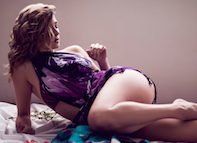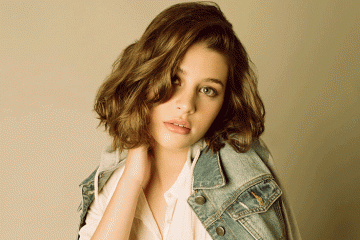The Beginner's Overview to Product Photography
If a photo is worth a thousand words, a sensational product photo deserves a thousand website brows through. Although I don't have information to back up that statement (yet), product photography can be exceptionally beneficial to your ecommerce internet site method.
To reach your target audience participants that favor acquiring online, you also require to provide your audience clear, appealing pictures of your products.
But product photography isn't as straightforward as directing and also shooting. Also the most basic items need the right tools, lighting, and also area to generate stunning pictures that market consumers right from the acquisition page.
6 Product Photography Tips (and Instances) for Taking Photo That Sell
Right here are the pointers, instances, as well as supplies you'll require to efficiently photograph and also market your products in a way that makes your visitors and also prospects intend to transform.
1. Do not be afraid to use your smart device's electronic camera.
This is the part where I'm expected to encourage you to invest in a high-end, 50-megapixel (MP) cam with a 100-millimeter screw-on lens. Yet I'm not going to do that.
If you already have a cam that fits this summary, benefit from it. But for numerous kinds of products, it's completely appropriate to shoot product photos on a smart device.
More recent smart devices boast effective cam lenses as well as settings that enable you to optimize your shots for the various types of light and environments you may fire in.
If you need more convincing, just look into Apple's Shot On An apple iphone campaign as well as the photos that have actually resulted from it throughout the years such as this:
2. Shoot from a tripod for photo consistency.
Prior to describing tripods, I'm obliged to start with a principal rule: Do not prop your phone against something sturdy to intend your lens toward the topic.
It's just too very easy for this makeshift setup to slide about throughout the shoot and also create disparities in your images' appearance. If you rest your camera on, say, a stack of books, simply make certain this plan doesn't change over the course of the shoot.
There's no damage in holding your video camera on your own when shooting simply a couple of product images for your ecommerce website. Yet as your service grows, and also you take much more photos of more items, it can be tough to systematize the product's positioning in each photo when shooting handheld.
To make sure consistency throughout your items, you'll require a tripod. And also luckily, getting one isn't constantly the huge, industrial-sized financial investment it utilized to be.
Below are two sorts of tripods to consider.
Conventional vs. Adaptable
This is a tradition tripod-- there are conventional tripods available for both cameras and also smartphones.
A flexible tripod can be adjusted in a variety of means. You can flex its legs and position it on various surface areas to obtain the angle you require.
Mobile Grasp
There's often a screw on the top of your tripod which connects to your cam to hold it in position. The bottom of a lot of professional-grade cameras has a screw opening just for this function, however mobile phones can make use of the adhering to adapter:
The adapter grasps the sides of your smartphone and also can screw into either sort of tripod, permitting you to run the cam regulates with the phone display facing exterior as well as towards you.
When you establish which mount you'll require, establish it up before your product, and also consider placing three pieces of tape on the ground to mark where you want to maintain each leg of your tripod throughout the shoot.
3. Pick all-natural light or man-made light.
Never ever underestimate just how particular types of light can improve (or hinder) your product photography. Remember, buyers get the best take a look at an thing personally, where they can see everything they need to prior to acquiring. The right lighting setup assists you reveal those essential decision-making product attributes when all site visitors have to go on is a photo.

A single lights arrangement could not benefit every product-- a lighting plan that benefits some items might compromise the look of others.
There are 2 kinds of light you can pick as your major source of light: all-natural and also man-made light.
Natural Light
All-natural light refers to sunlight-- basic as that. It's likewise referred to as "soft light" because the sunlight casts a larger, softer series of light than, claim, a light shining straight on the product. Ecommerce product shots flourish in natural light if:

The product is shot outside or implied to be utilized outside.
The product is made use of by, worn on, or shot with a person ( individuals tend to look better in natural light).
You're trying to highlight the product's environments, instead of specific attributes of the product.
Right here's an instance of a shot making use of all-natural light:
Man-made Light
Synthetic light includes candles, fire, as well as much more generally, light bulbs. It's likewise referred to as " tough light" because it generates a smaller sized however much more focused light surface. This type of light accommodates items with physical details that require to be highlighted to impress an online shopper.
As a general policy, stay with fashion photography gold coast simply one sort of light per photo-- natural or man-made. Adding natural light to an synthetically lit photo can soften a product that's suggested to look sharp, and adding fabricated light to a naturally lit photo can sharpen a product that's suggested to look soft. You don't want to enter your very own way.
4. Load or jump your light to soften darkness.
Whether you utilize natural light or artificial light, you'll need to decrease the shadows that any kind of potential hard light casts on the contrary end of a product.
There are three methods to do this:
Fill up Light
Consist of one more, less-intense light to supplement your primary light. This added light is called your fill light as well as is used as a counterbalance to soften the natural darkness your primary light creates behind an things.
To do this, position your fill light contrary your main light so your product sits between both lights.
Flashbulb Bounce Card
A bounce card, or reflector card, is a little card that "reflects" or " jumps" the major light back onto the surface below your product to lower darkness.
Some bounce cards affix to the flashbulb of a professional electronic camera lens to diffuse the light from the camera's flash. This card splashes a softer light onto the topic from over your set-- as opposed to right at it-- so you don't have long shadows trail behind the item you're firing.
Standalone Bounce Card
If you're firing from a smart device, a flashbulb bounce card isn't an alternative, because you do not have a physical flash you can affix it to. Instead, make your very own standalone bounce card placed contrary your primary source of light.
For novices to product photography, this bounce card can successfully change your fill light, which counters the hard light from the camera flash or light that's facing towards the front of your product.
5. Use a sweep or picture setting to stress the product.
There isn't one best method to position your product, lights, as well as bounce cards-- they can change significantly depending on your background. But don't pick a history based on what's easiest to produce. Backgrounds need to look like just how you want your buyers to regard your product when watching it online.
Think about first whether you would certainly such as a white history or a much more dynamic, real-world background. There's an easy means to achieve each one.
White History: Sweep
For white histories, it's not as basic as setting up a table versus white drywall. Even mobile phone electronic cameras can get little blemishes on a white wall that you wouldn't discover with the nude eye. To catch a perfect white history without any corners or imperfections, utilize a move.
A move is a large bendable sheet of paper, whose lower acts as the surface area under your product and after that curves up into a white wall surface behind the product.
On video camera, the move's curve is undetectable, highlighting essential product details and permitting the item to own every one of a internet site visitor's interest.
Real-World History: Portrait Mode
Dynamic, real-world backgrounds are really attractive when capturing items that have a specific use or are being designed by a person-- as you saw aware of the brief-case earlier in this overview.
Yet, it's easy for a real-world background to swipe the focus of the photo, making it uncertain which product in the photo you're actually selling.
Give your product deepness as well as focus with picture setting, a photo setting on many specialist cams, and also available on numerous brand-new smartphones. This setup blurs the history so the context of the product is clear but not competing versus the product itself.
Below is a extremely awesome photo of a HubSpot pen taken in picture setting on a Google Pixel 2 (I took this photo myself). You can inform the pen rests on a workdesk with a computer behind it, yet the pen is still the prime focus for visitors:
6. Shoot a selection of pictures.
My last ecommerce photography pointer to you is to not stop at one photo per product. Equally as your clients look, hold, make use of, as well as also try out goods in a shop, your internet site needs to fire a variety of pictures to imitate this very experience.
If you're shooting garments, for example, catch the garment of apparel alone-- that is, expanded on a white surface area-- along with on a mannequin whose color contrasts the color of the product.
After that, for additional pictures, have the garments modeled on a individual, enabling you to take pictures of the product from the person's different positions as well as angles.
Product Photography Set Up

Next off, let's summarize what we just obtained-- below's a listing of fast product photography set-up ideas that you can describe and share on your group:
• Pick a video camera-- whether or not that means utilizing your mobile phone.
• Get a tripod that helps your cam of option.
• Pick all-natural or artificial lighting-- think of which choice is best for your product and atmosphere.
• Determine whether you'll fill or jump light.
• Select move or portrait mode.
• Take several different images to offer your audiences variety.
Get Started With Your Product Photography
Don't feel obligated to invest in every pointer as well as piece of equipment at once. Use these product photography ideas gradually to see what makes your shop look one of the most presentable, as well as alter your technique as your photography chops improve.